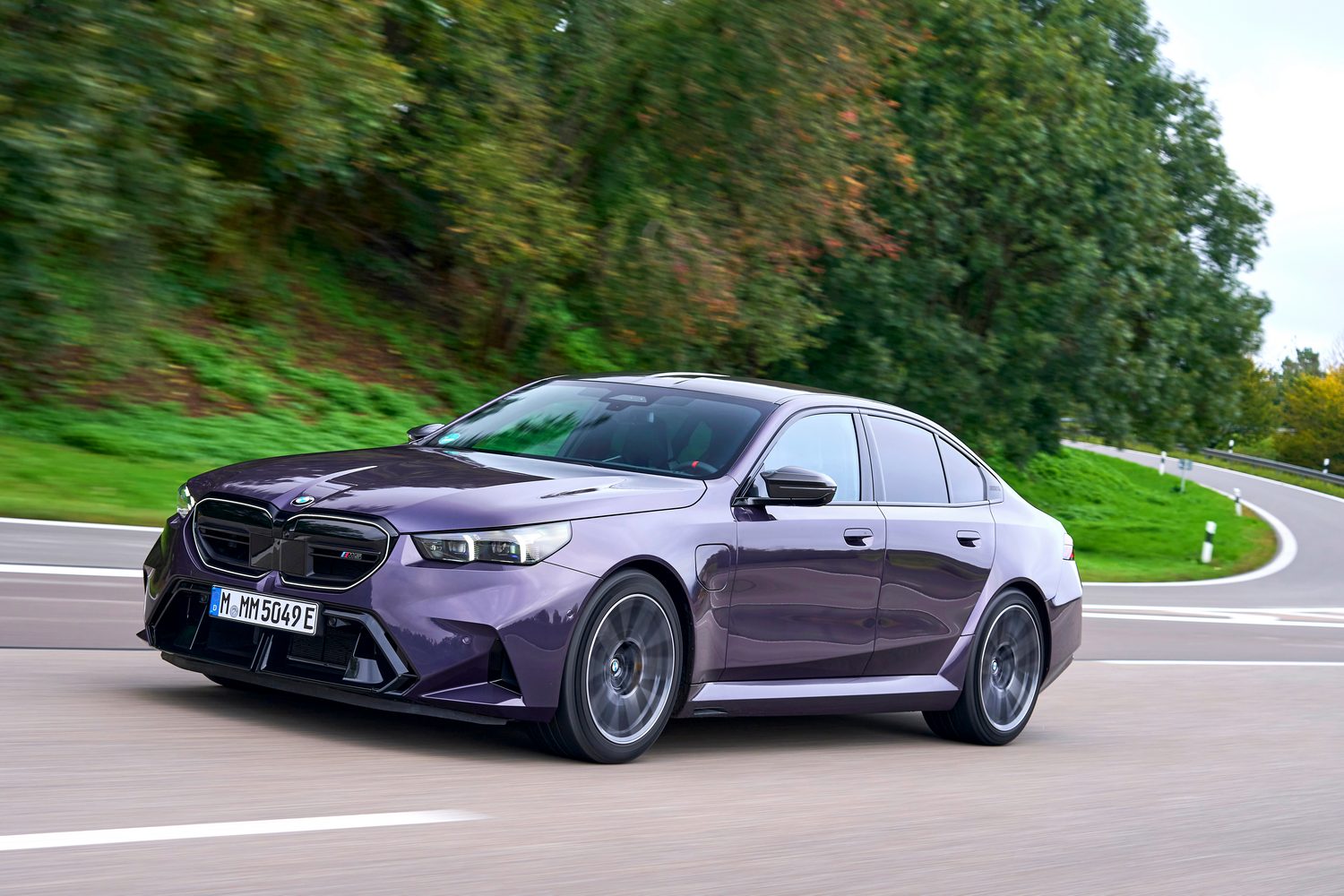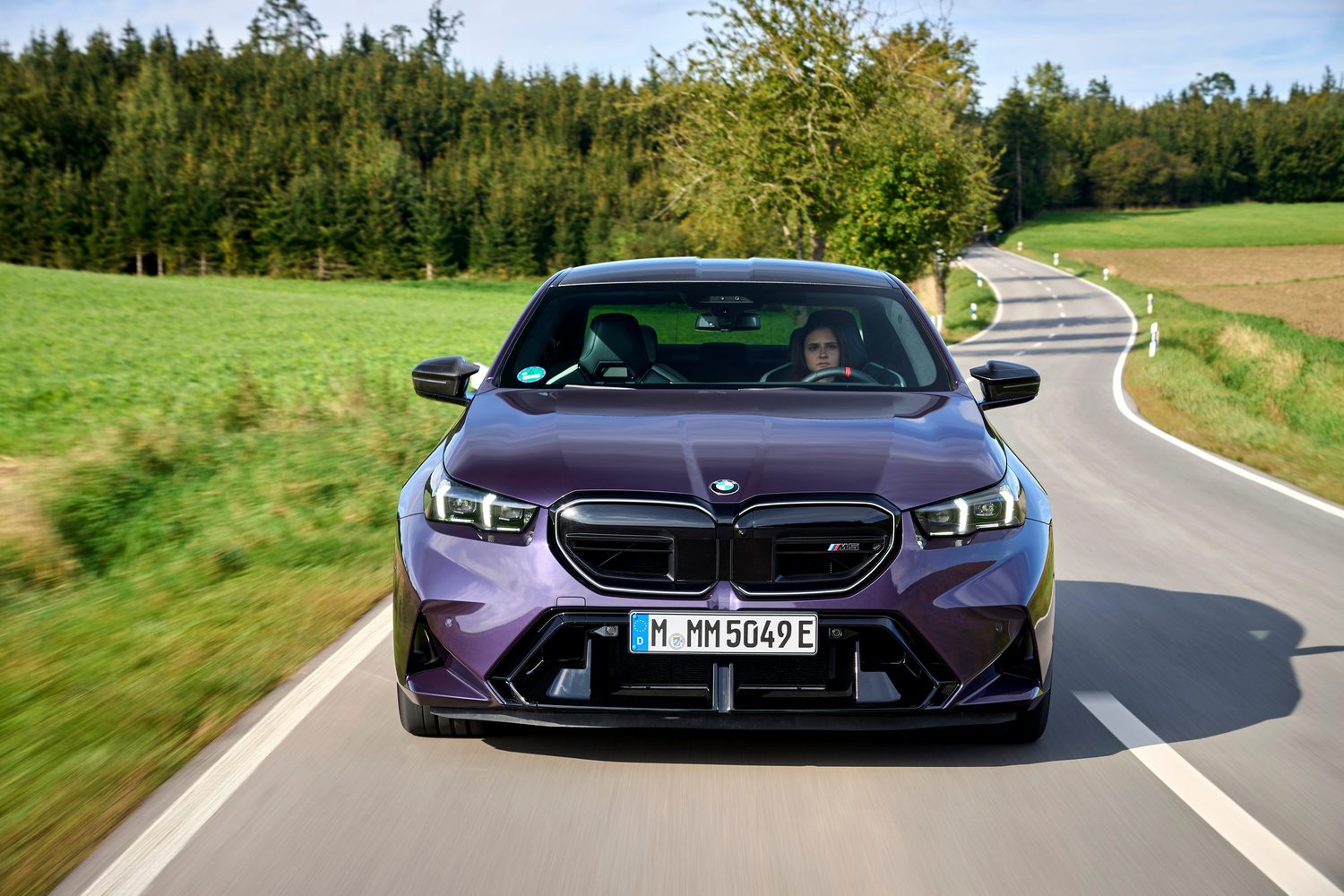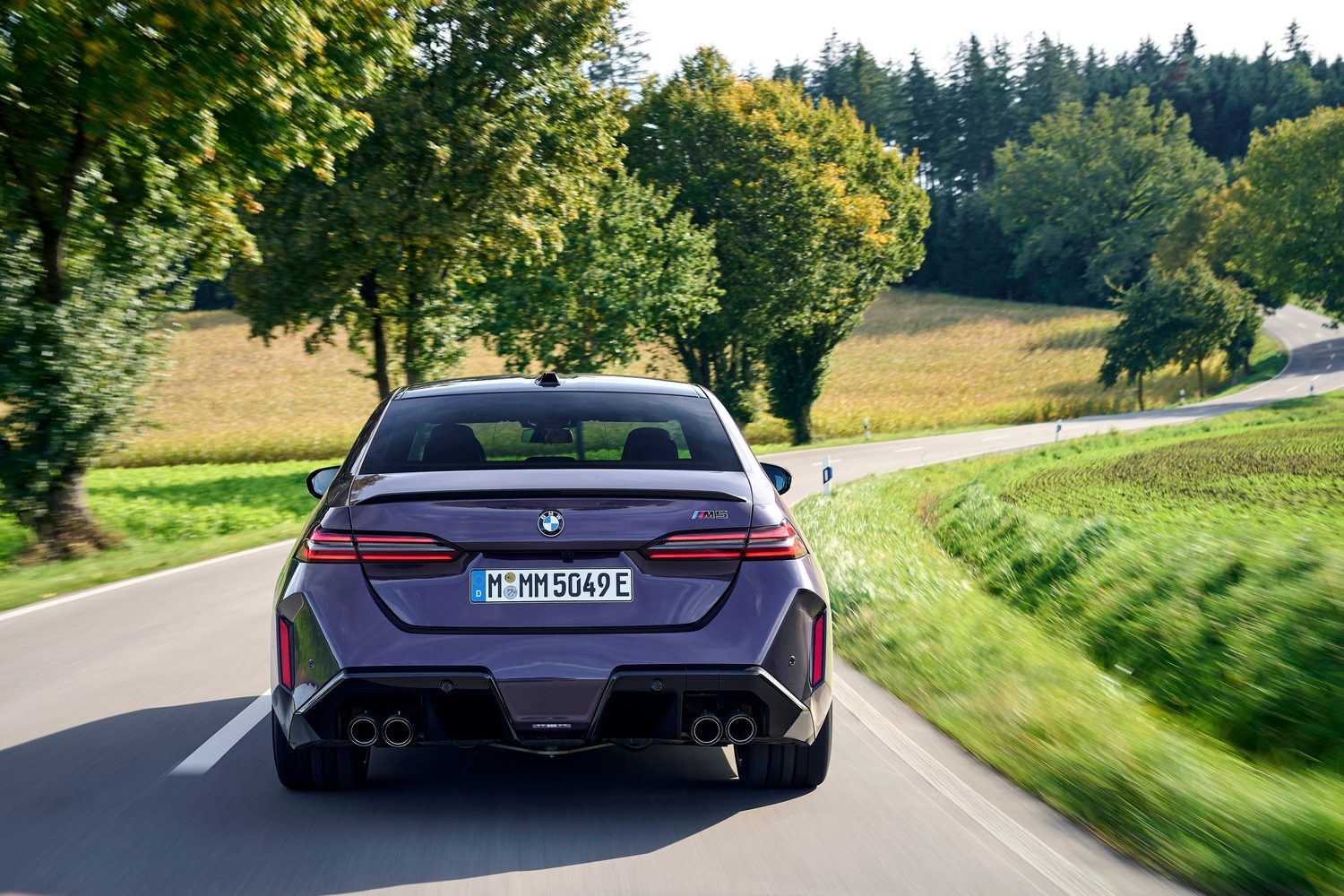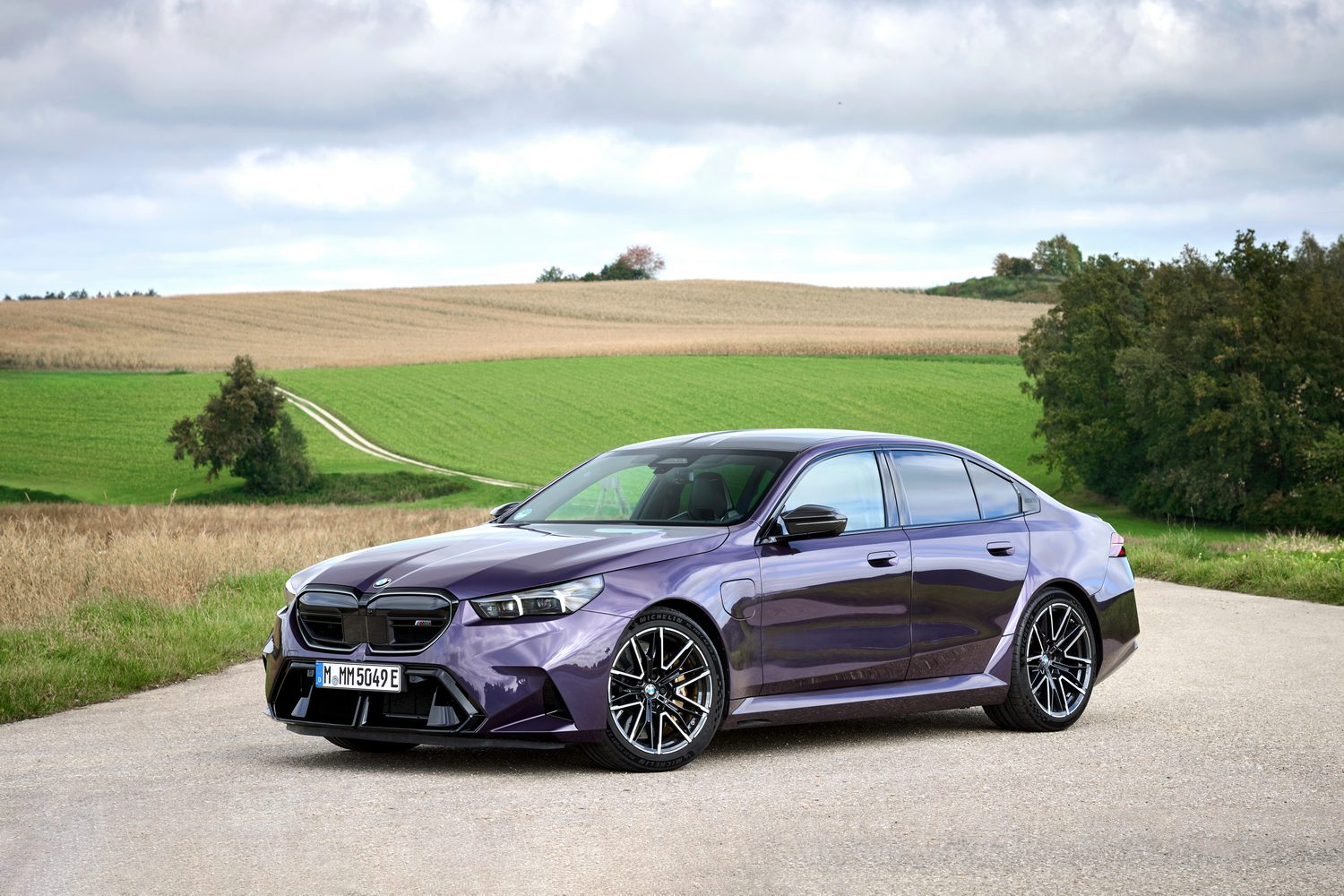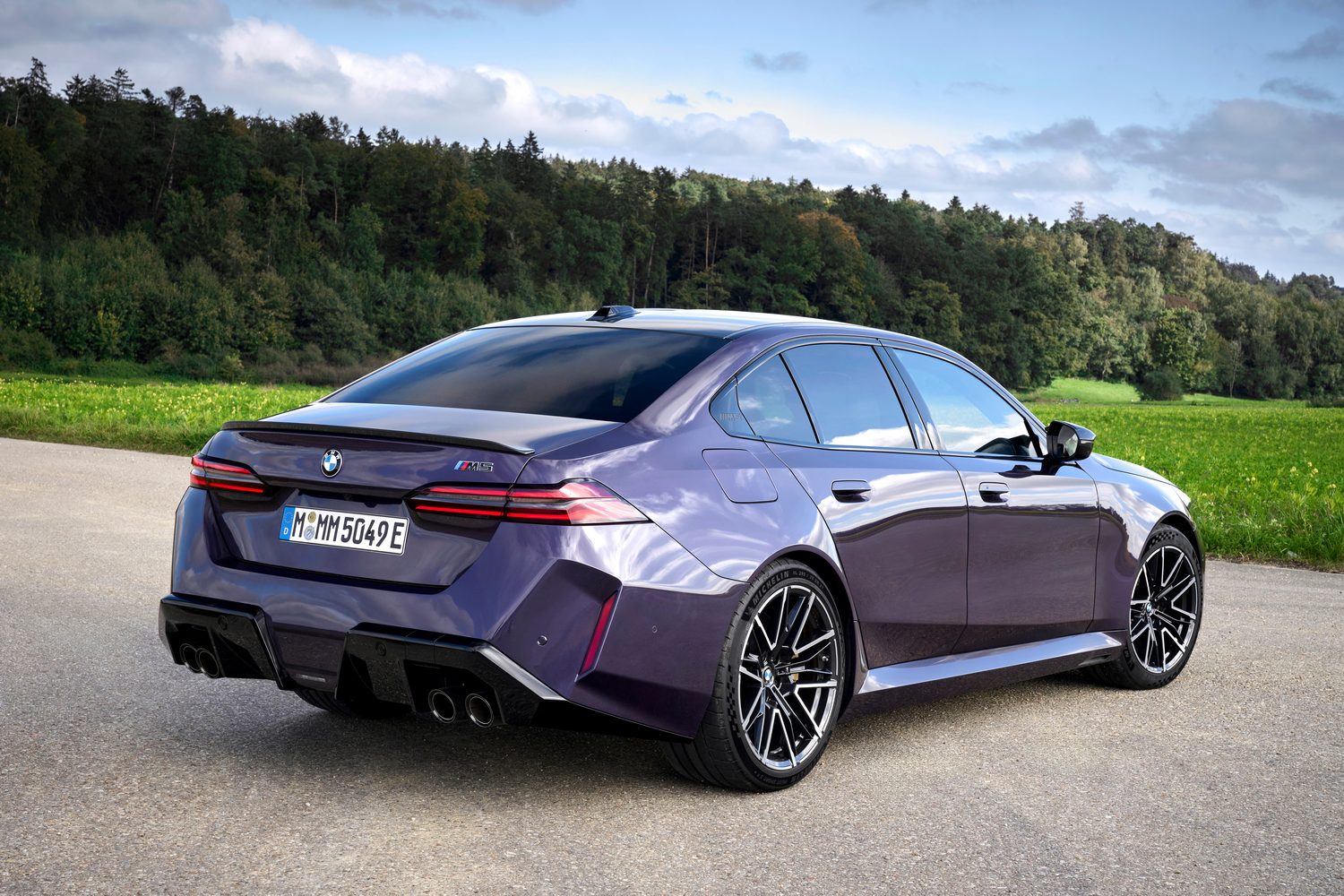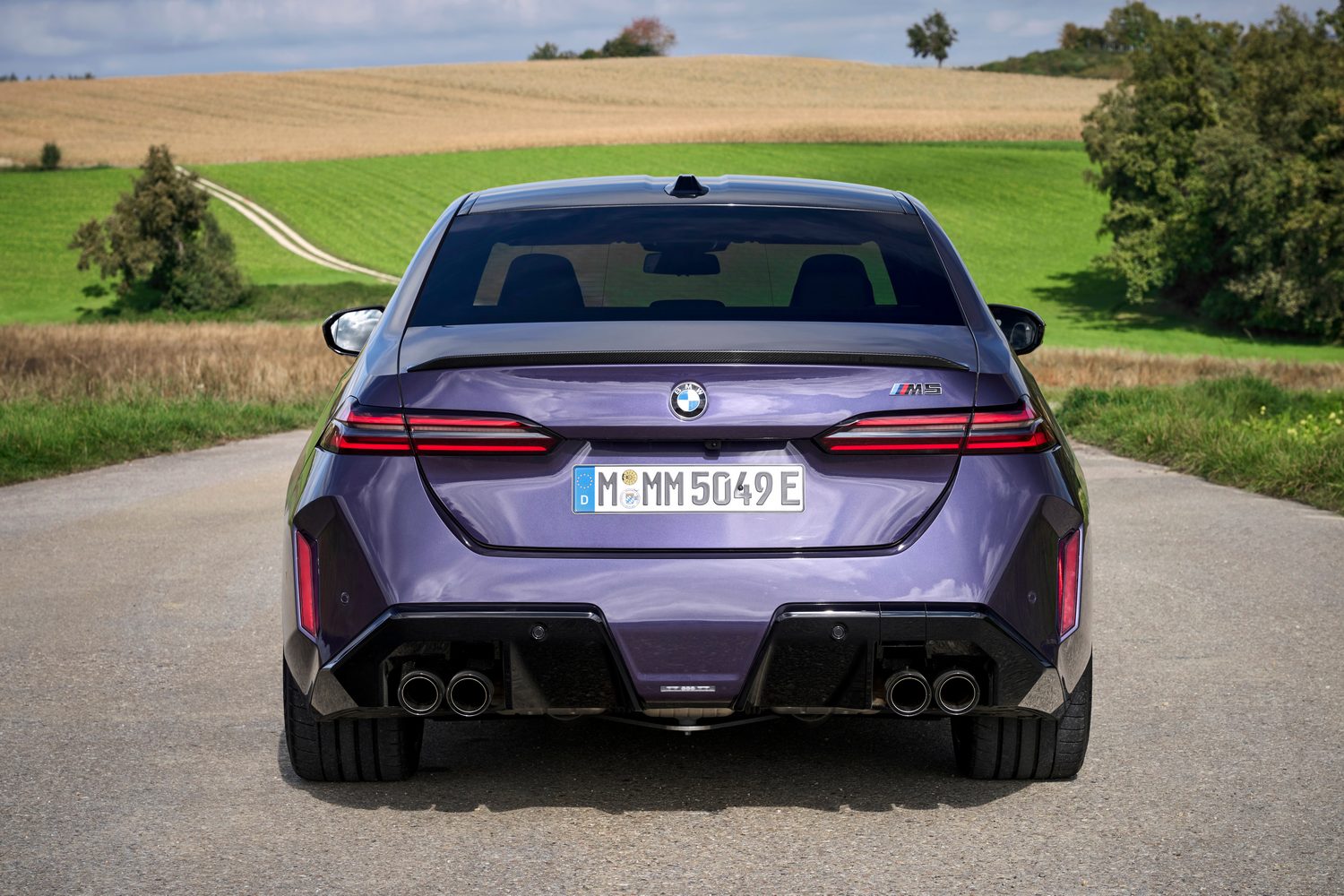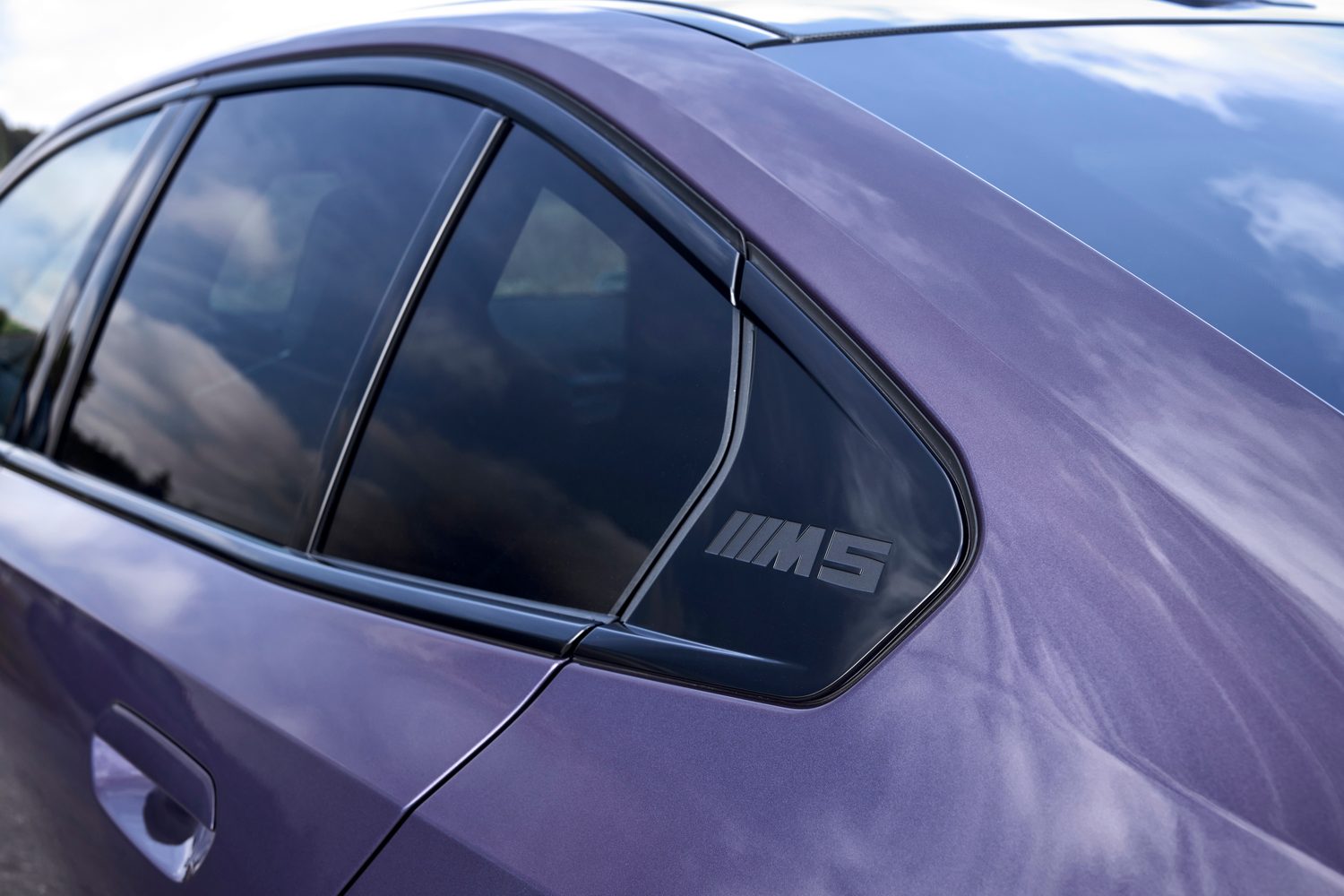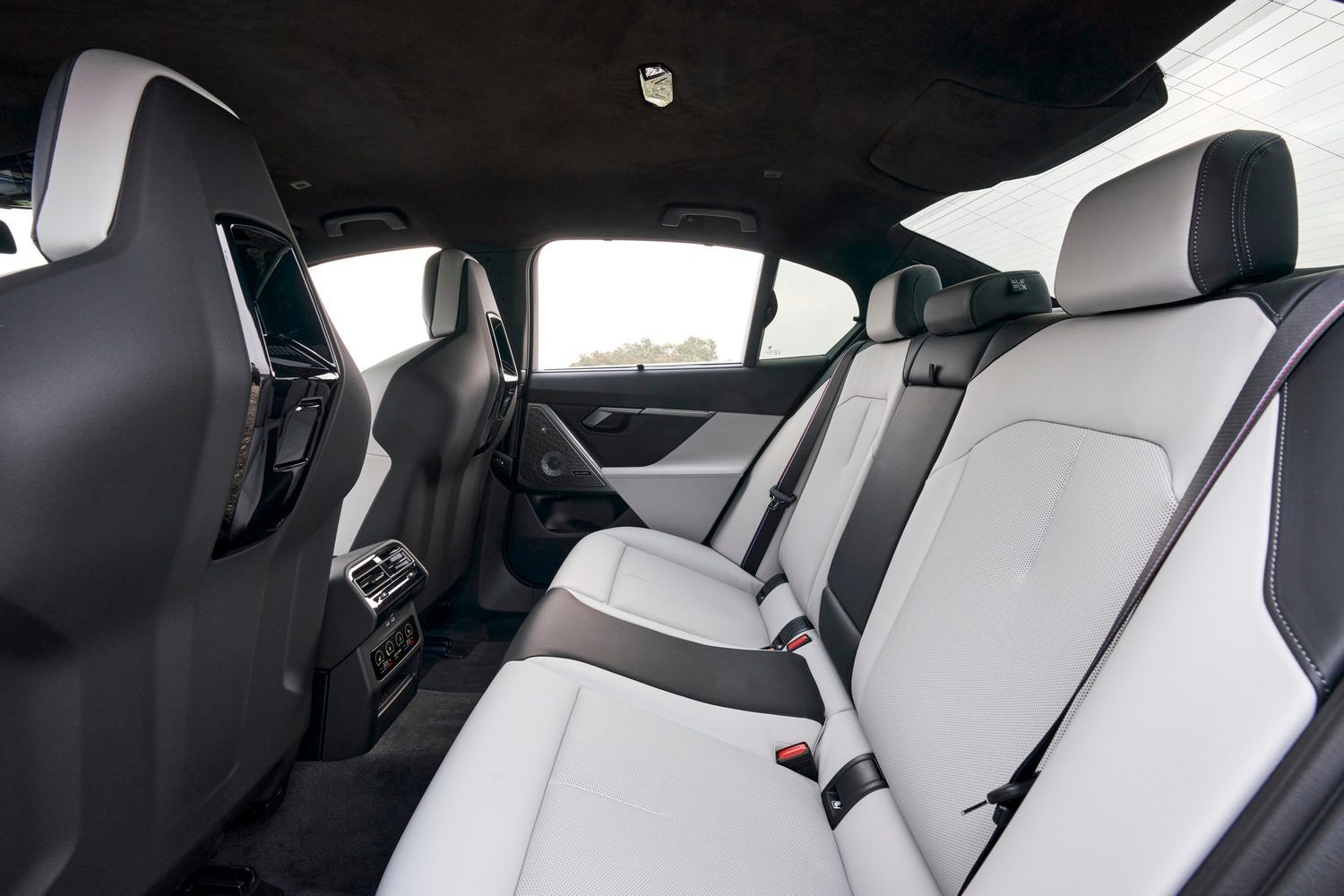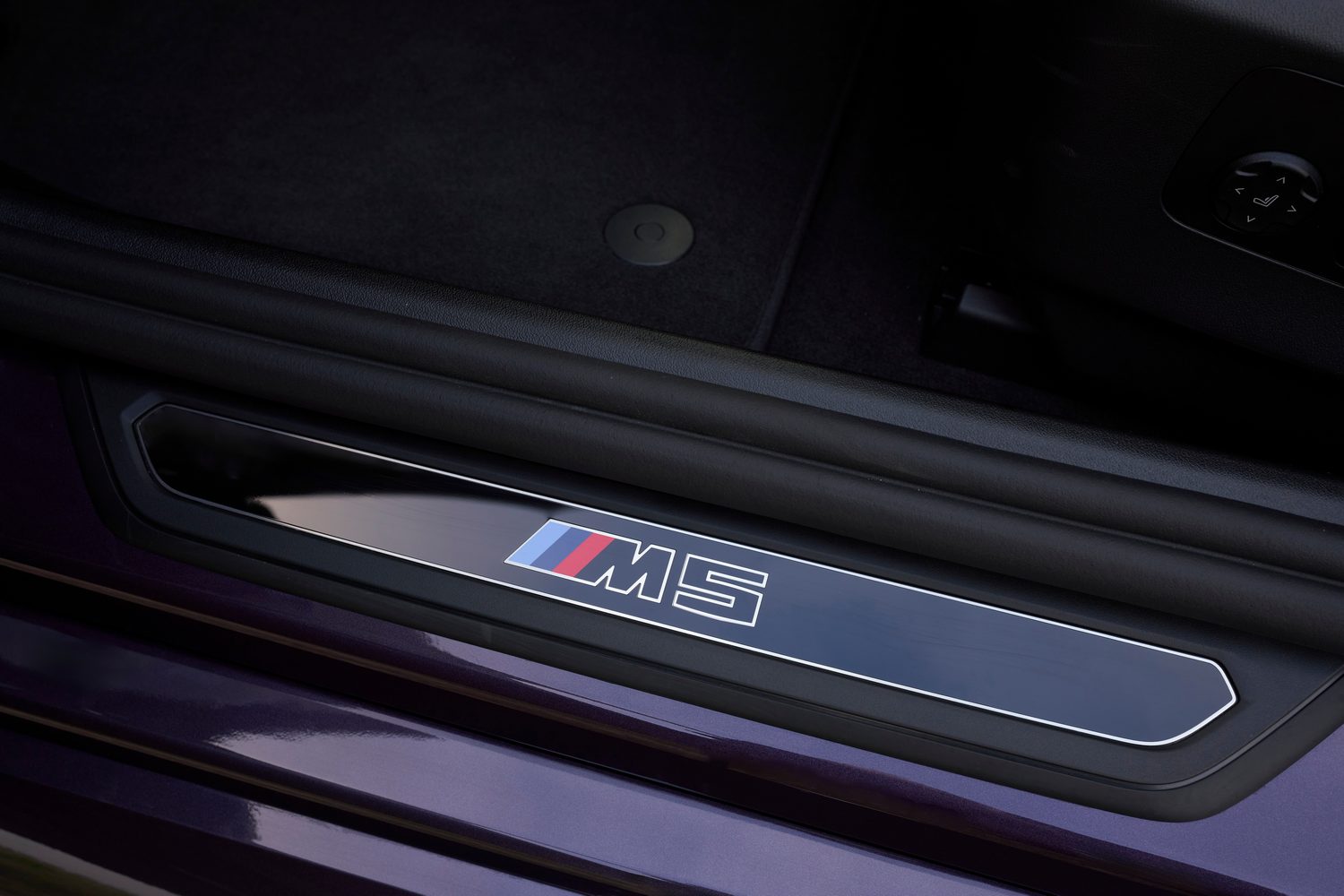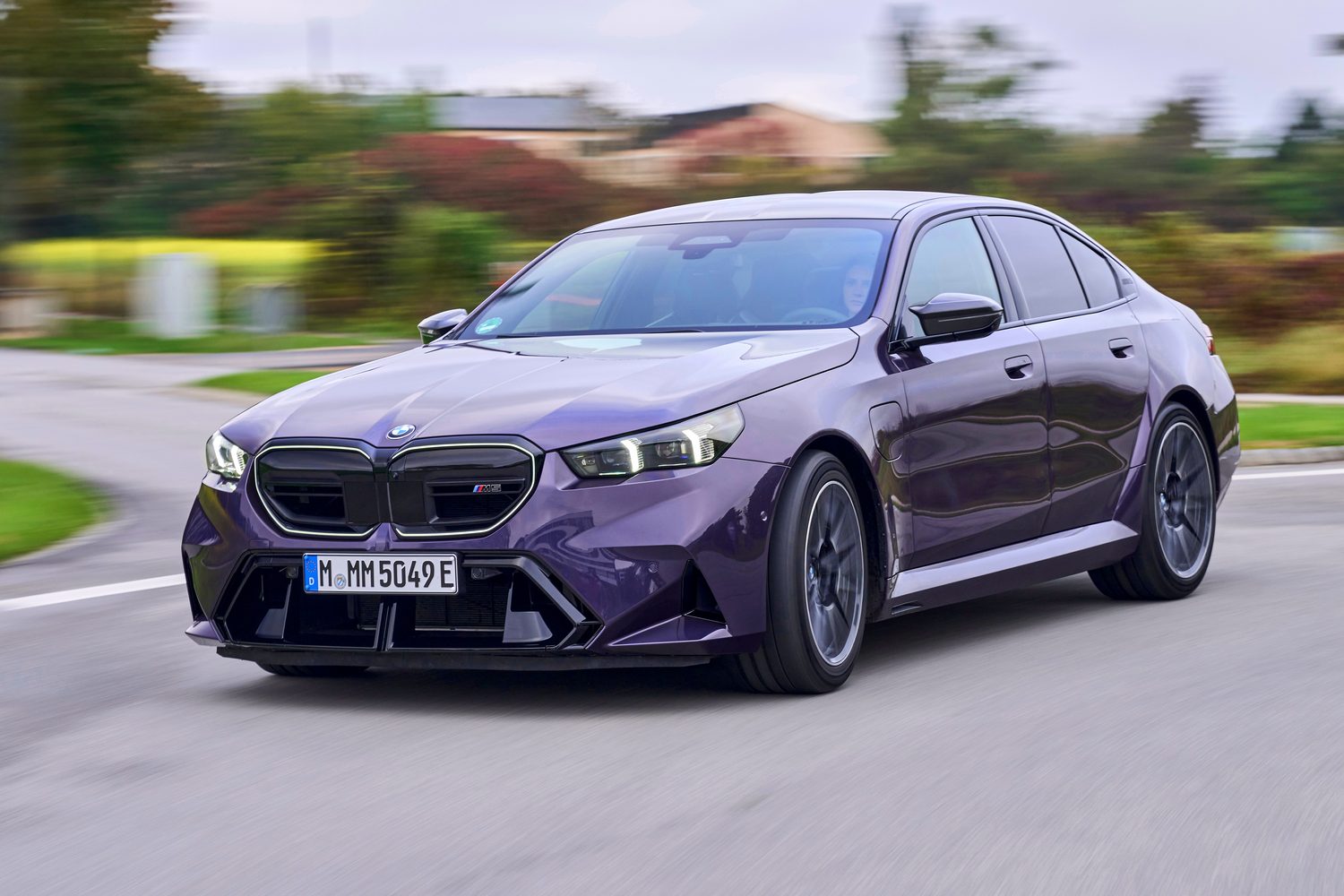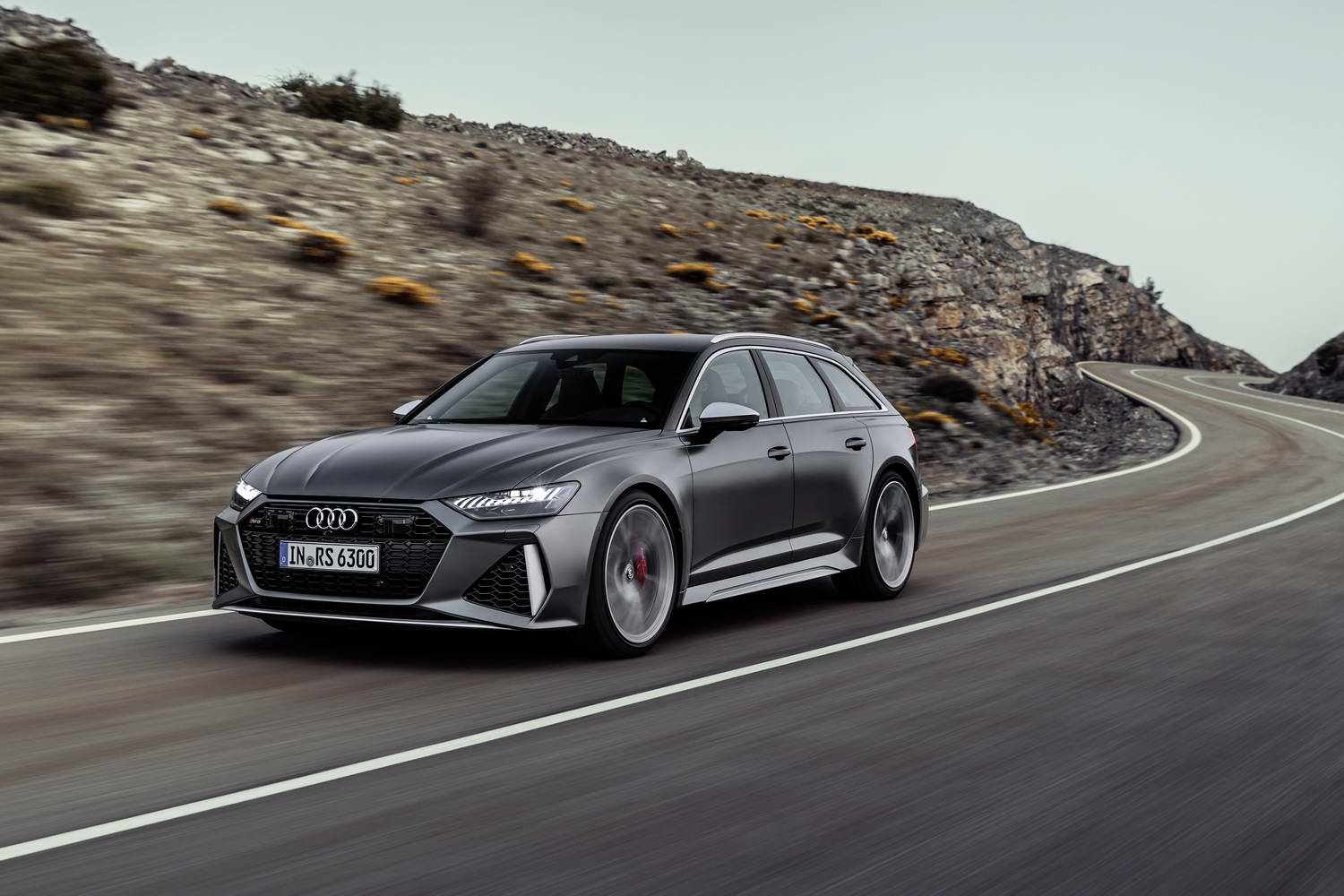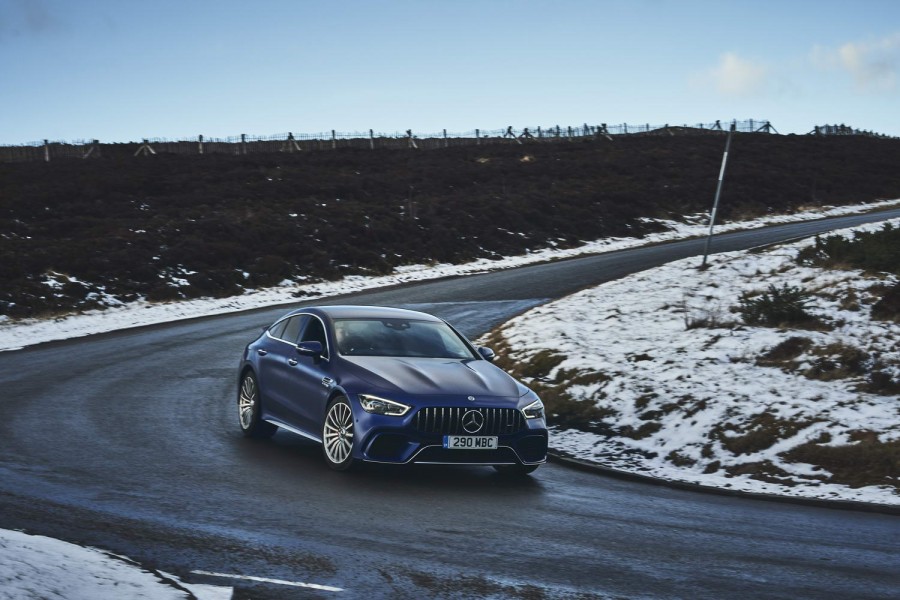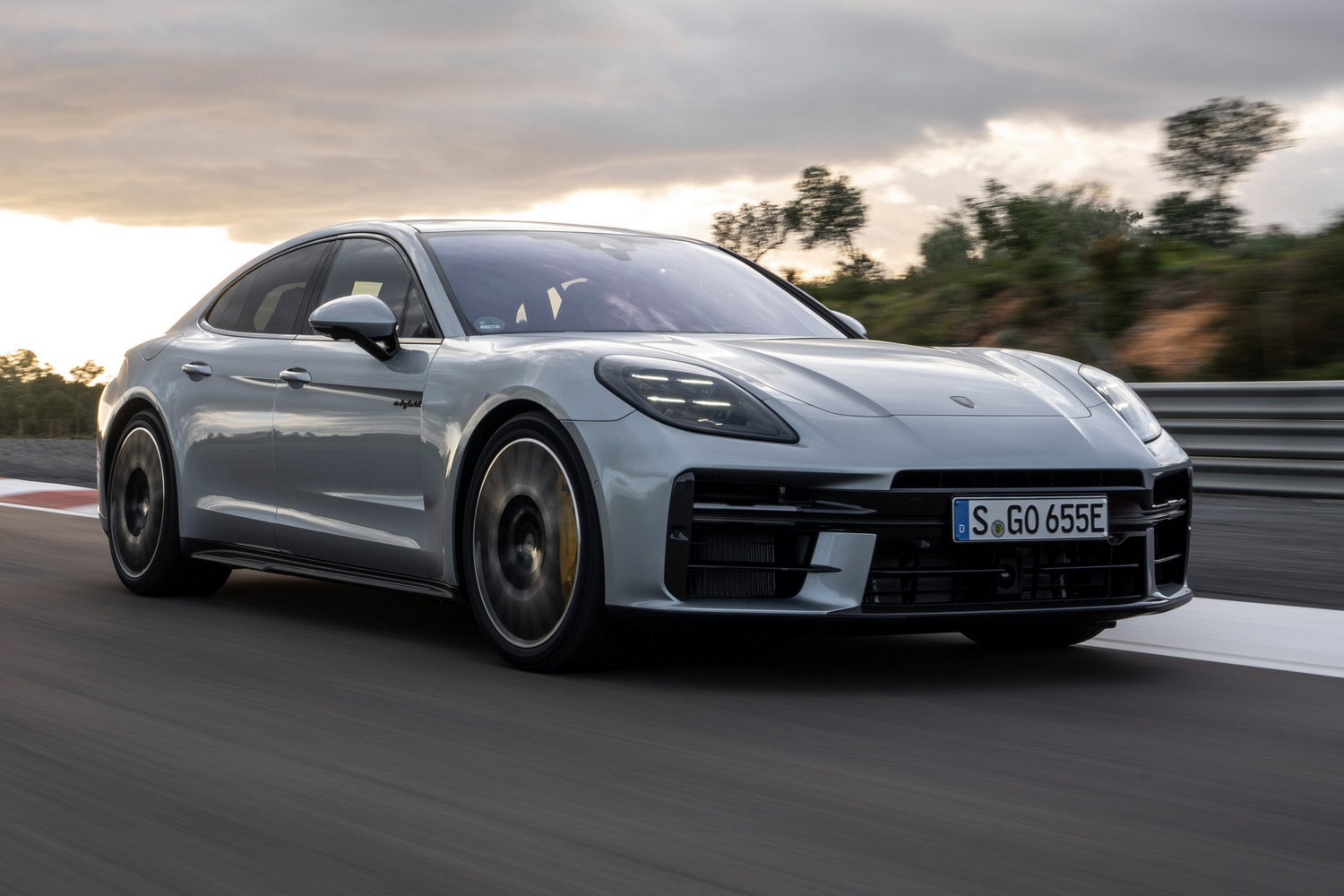In one sense, we don’t really need to introduce the BMW M5. After all, for forty years now - since the original ‘E28’ version was launched using the mighty 3.5-litre straight-six engine from the BMW M1 - the M5 has been the more or less unquestioned ruler of the high-performance saloon world. Oh sure, every once in a while, a convincing challenge will be mounted by Audi, Mercedes-AMG, Jaguar, or Porsche but we all know that the BMW is the king.
That said, we really do have to introduce this one, as the latest M5 - the G90 model, for all you BMW product code nerds out there - is arguably the biggest re-write of the sports saloon rulebook since the E39 model switched from straight-six to V8 power in 1998.
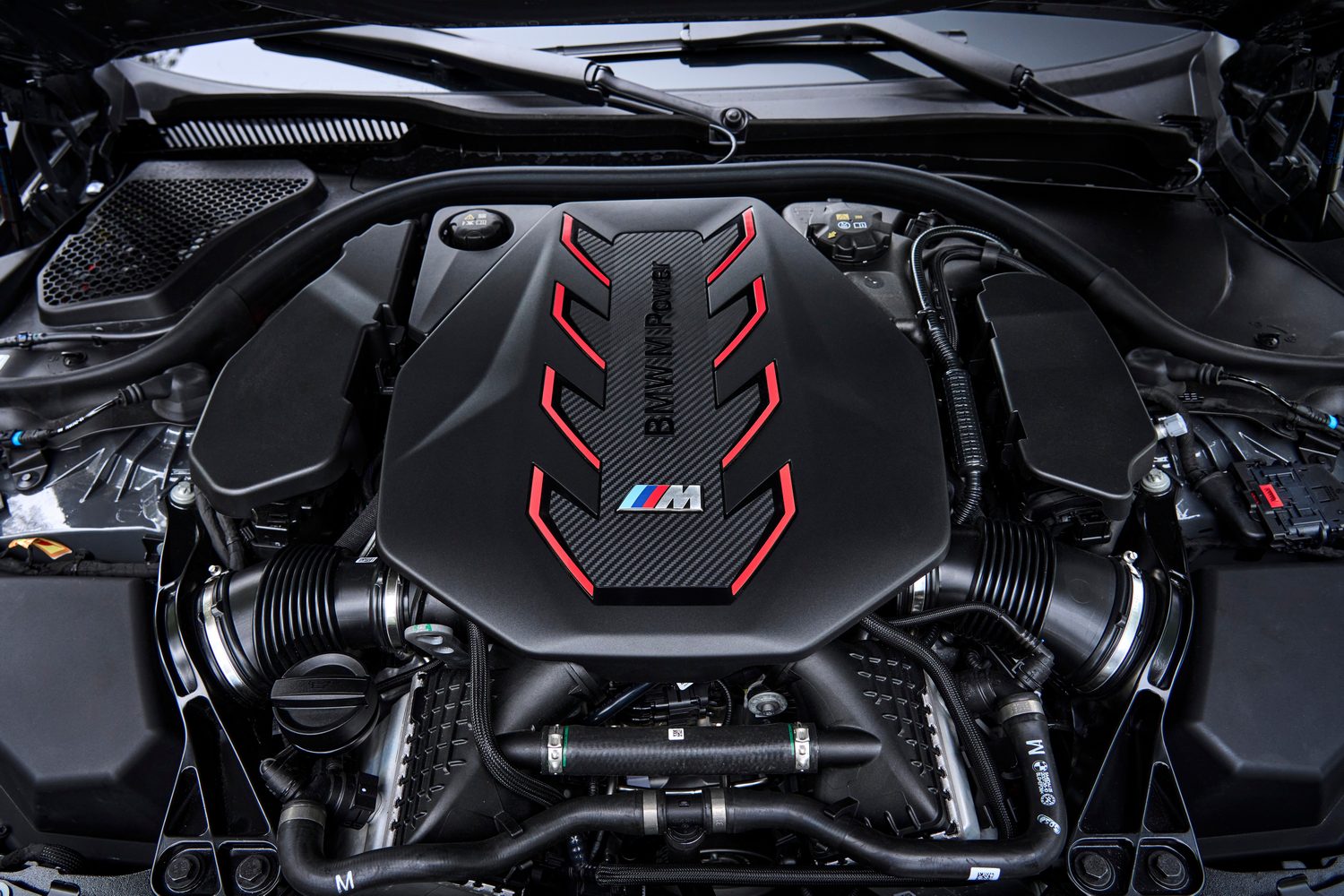
Don’t fret, though; this M5 is still powered by a V8, a 4.4-litre twin-turbocharged engine developing up to 585hp. Now, the eagle-eyed amongst you might have noticed that 585hp is a heck of a lot less than the previous M5’s 635hp in its ultimate CS specification. Again, fret not - that’s just the engine power. This new M5 is a hybrid.
A plug-in hybrid to be precise, so there’s an 18.6kWh battery pack feeding energy to a 145kW (that’s 197hp) electric motor. Together, the motor and the V8 power all four wheels (unless you get a rush of blood to the head and switch the M5 into rear-drive only) and together they produce up to 727hp, not far off a full 100hp up on the mighty CS.
There’s even quite a good all-electric range, of up to 69km, if you fancy using your M5 for zero-emissions city-centre driving, which sounds like good citizenship to us. The downside to all this? Weight. Or mass, if you prefer, and the M5 presses its 285/40 20-inch front and 295/40 21-inch rear tyres into the tarmac at a hefty rate of 2,510kg. That’s full-on SUV weight for a four-door saloon, whose heritage has been built on not merely thuggish power (leave that trick to AMG or Brabus) but delicate handling and precision. Has BMW turned the M5 into an over-grown, over-blown, blunderbuss?
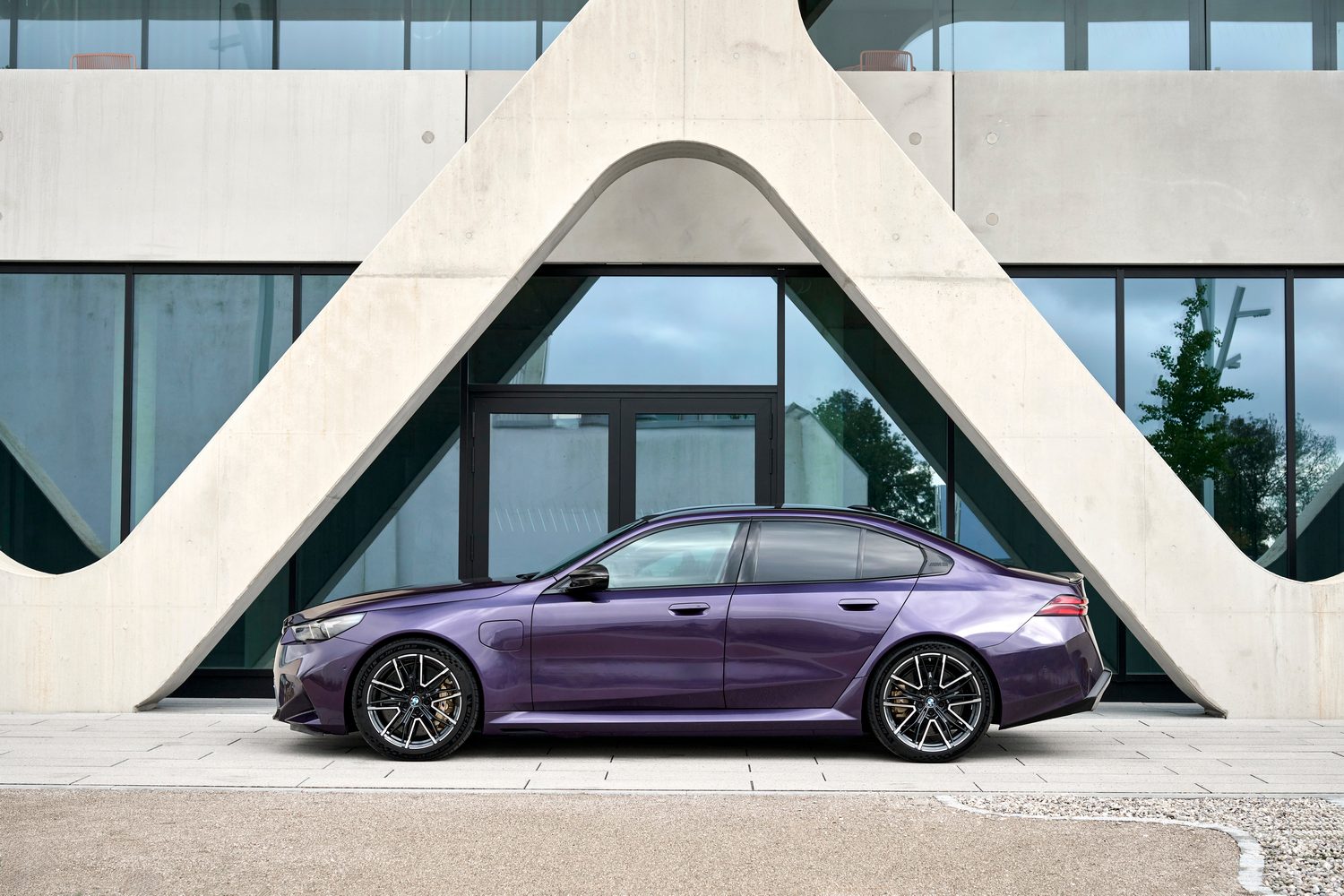
How much is the BMW M5 in Ireland?
The new M5 is by no reasonable measure cheap, but it’s hard to think of it as anything other than the biggest performance car bargain of the decade thus far. That’s because the Irish vehicular tax system tends to get easily blindsided by technological leaps, and because the M5 is now a PHEV, and because it has impressively low CO2 emissions of 37-39g/km, it now sits in a surprisingly low VRT taxation band.
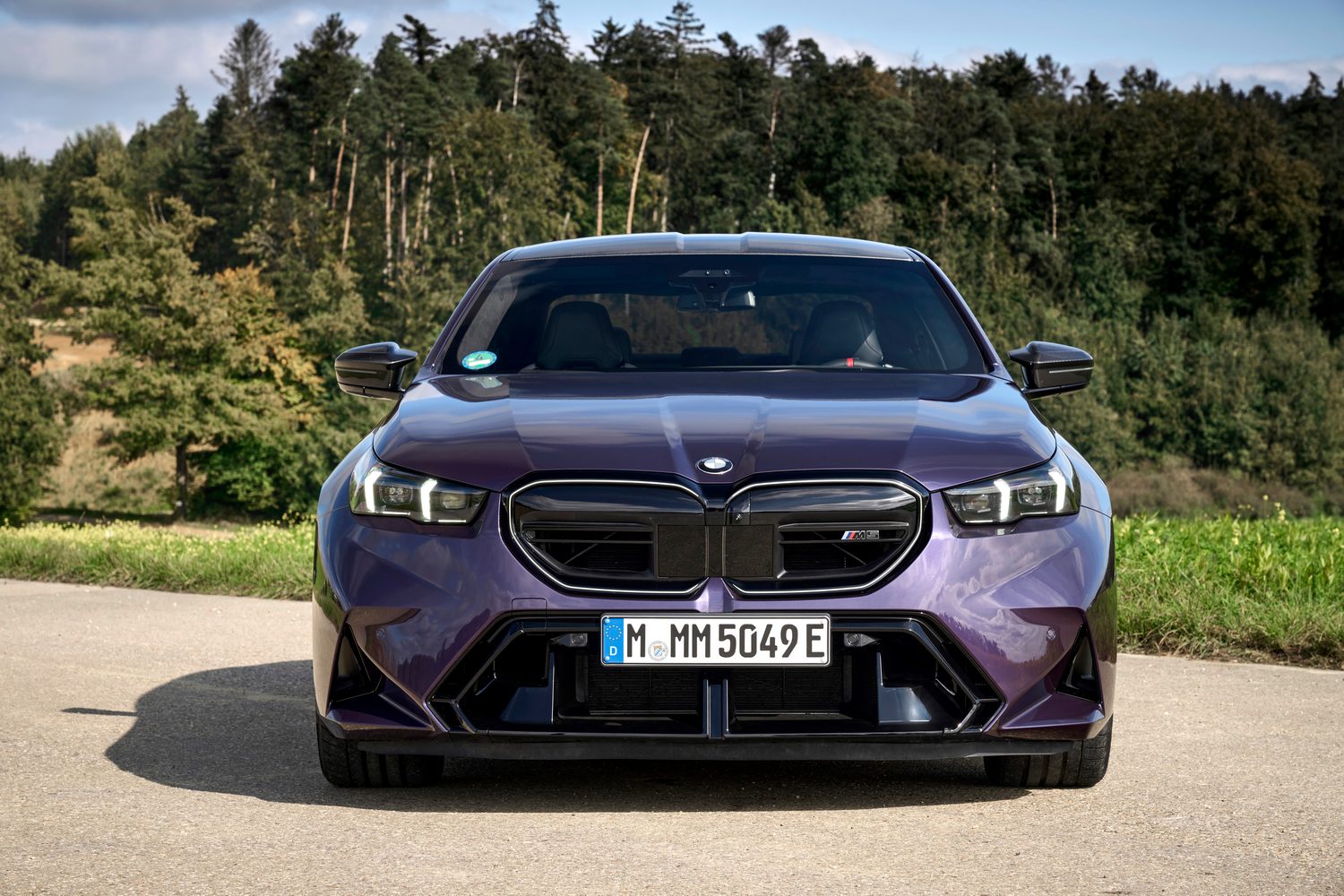
Lower than that of the old M5. So much lower, in fact, that at €137,055 this M5 is the guts of €60,000 cheaper than the previous model. That’s an astonishing drop in price, one so precipitous that it makes the new M5 more affordable than the BMW M3 saloon. According to BMW Ireland, some 50 Irish customers have already put down deposits on the new M5, with a further 11 plumping for the new M5 Touring estate (something we’ll be able to tell you more about in a couple of weeks).
A look inside the BMW M5
There’s not a lot of difference in the M5’s cabin compared to a regular 5 Series or electric i5, and what differences there are, are largely red. There’s a red 12-o’clock marker at the apex of the flat-bottomed steering wheel (allegedly fitted because Michael Scully, head of BMW M Design, likes to race cars at weekends and he’s too tall to fit in most racers without a flat-bottom wheel, but then again, the regular electric i5 comes with a flat-bottomed wheel too...). There’s a red engine stop-start button, and BMW M Sport red, blue and purple flashes everywhere you look from the touchscreen to the fabric of the seatbelts to the little illuminated logos in the backs of the tall-backed bucket seats.
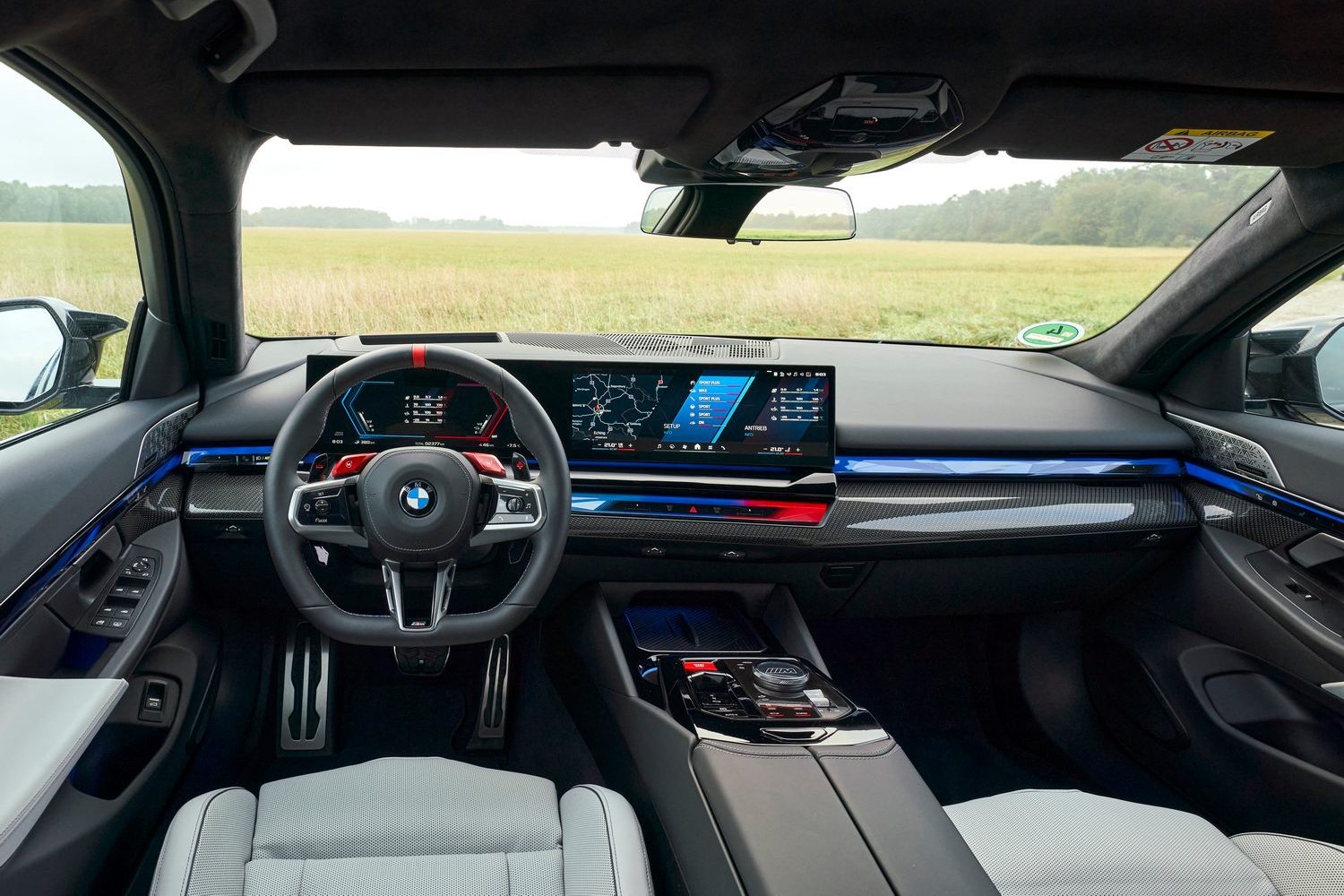
Those seats deserve a special mention, capable as they are of offering continent-crushing cosseting comfort at one moment, and kidney-gripping support the next. They are arguably the best seats fitted to any current BMW, and thankfully they do without the annoying carbon-fibre codpiece fitted to some of the sportier M4 and M3 bucket seat options.
Beyond that, there’s not a lot to report. There are some minor switch differences on the centre console, and of course there are carbon-fibre paddle shifters behind the steering wheel, and little red M1 and M2 memory buttons atop the wheel. The rest is as per the regular 5 Series, and that’s no bad thing. It’s a refined and comfortable space, with plenty of legroom and headroom in both front and rear, and just slightly not enough storage space for odds and ends in the front.
Overall quality levels are excellent (aside from some scratchy plastics around the door window switches) and the M5’s cabin ambience feels more welcoming than you’d find in an equivalent Audi RS product.
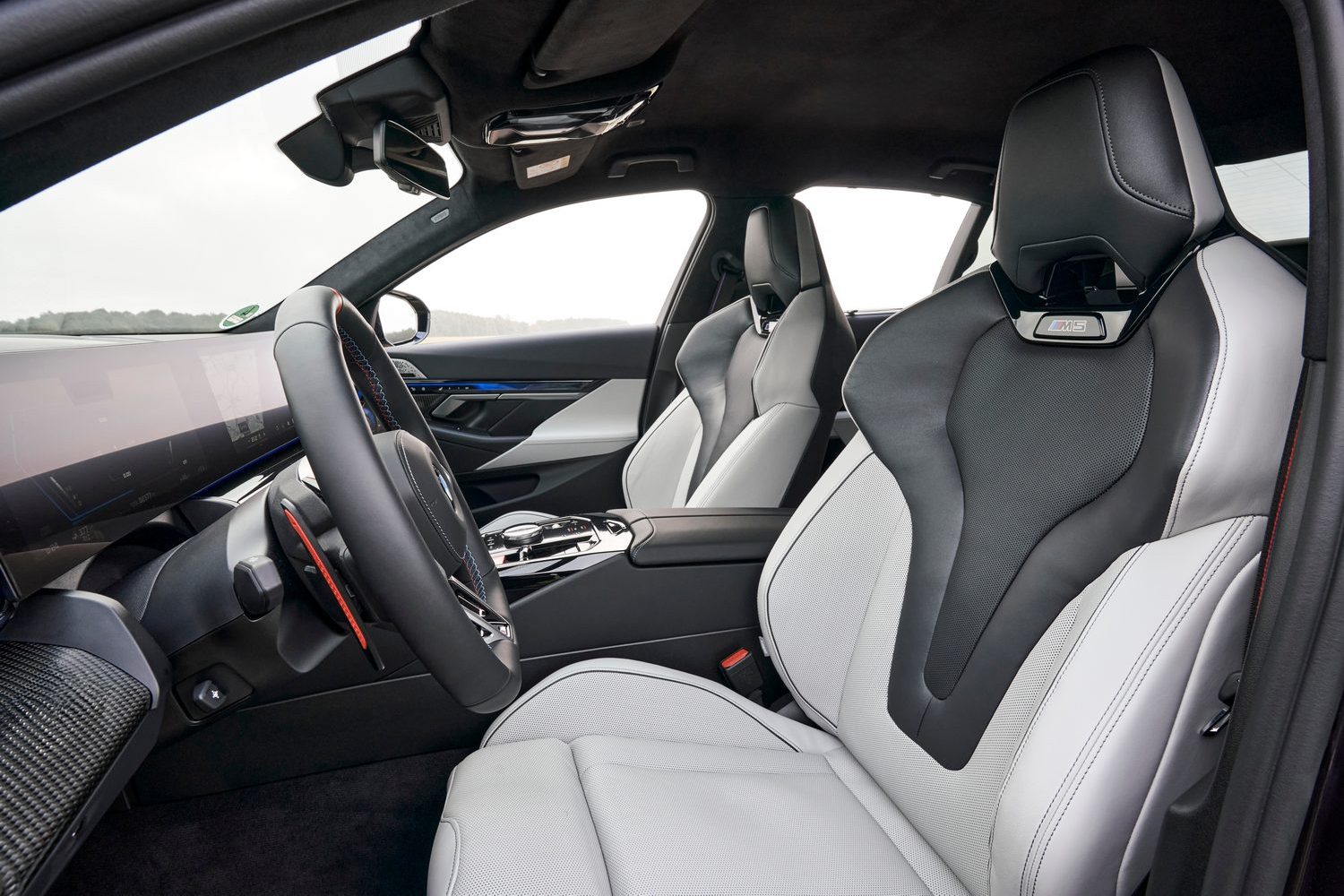
Although space in the back is good, space in the boot is less so - at 466 litres, the M5 holds significantly less luggage than a humble 520i. More excuse to buy the Touring estate, we guess...
The BMW M5’s on-board technology
As with almost all BMWs right now, you get the massive, curved twin-screen digital layout atop the dashboard - 12.3 inches for the instrument display, and 14.9 inches for the infotainment screen. The M5 keeps a click-wheel ‘iDrive’ controller for the main display, so it’s a little easier to use when you’re on the move than stabbing at a screen.
Behind the rotary controller on the centre console are some flush-fit buttons which allow you to tune the driving mode between Road, Sport and Race modes, and within those there is nigh-limitless potential for you to tweak the settings as you please. Before setting off, we - as we suspect most owners will - used the M1 and M2 memory buttons on the steering wheel to pre-set a relaxed Hybrid driving mode, and a more intense Sport Plus driving mode for more interesting roads.
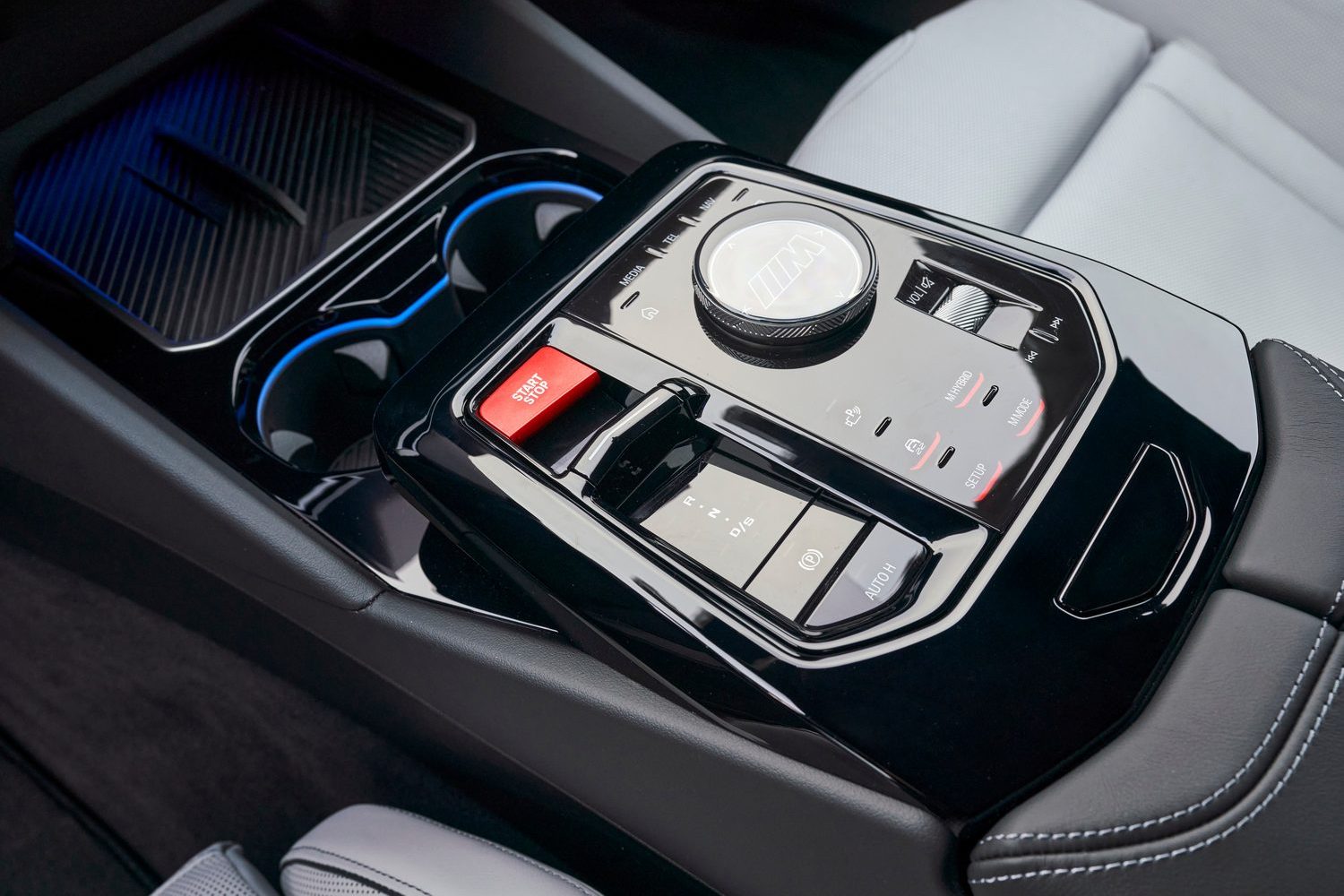
This being a plug-in hybrid, uniquely in M5 history, you can select an all-electric driving mode, and when driving on just the electric motor, the M5 still feels acceptably brisk, helped by BMW’s trick bit of engineering that up-gears the motor to allow it to deliver a punch of 450Nm of torque for brief periods. You can also charge the battery as you drive, of course, and the M5 has a geo-locked system which can automatically tell when you have zero-emissions zones on your route, and switch to electric-only power at the right moment.
Twiddling with the driving modes also changes the suspension firmness, the steering weight, the throttle response, and just how savage the gear changes from the eight-speed automatic gearbox are (although to be honest they’re never all that snappy).
You can tailor the driver’s instruments in multiple ways (although there’s not a lot of actual difference between the different layouts) and there are M-specific graphics and details, such as the display showing both tyre pressure and tyre temperature, which uses an overhead graphic of an original M1 - a neat little touch.
There’s more - a head-up display (a very good one as it happens), virtual reality navigation which overlays direction arrows on live video footage taken from the forward-facing camera, video streaming, AirConsole video games, BMW’s Iconic Sounds system which amps up the V8 noise in the cabin when you’re pressing on, a digital key on your phone and a built-in 5G hot spot are all included.
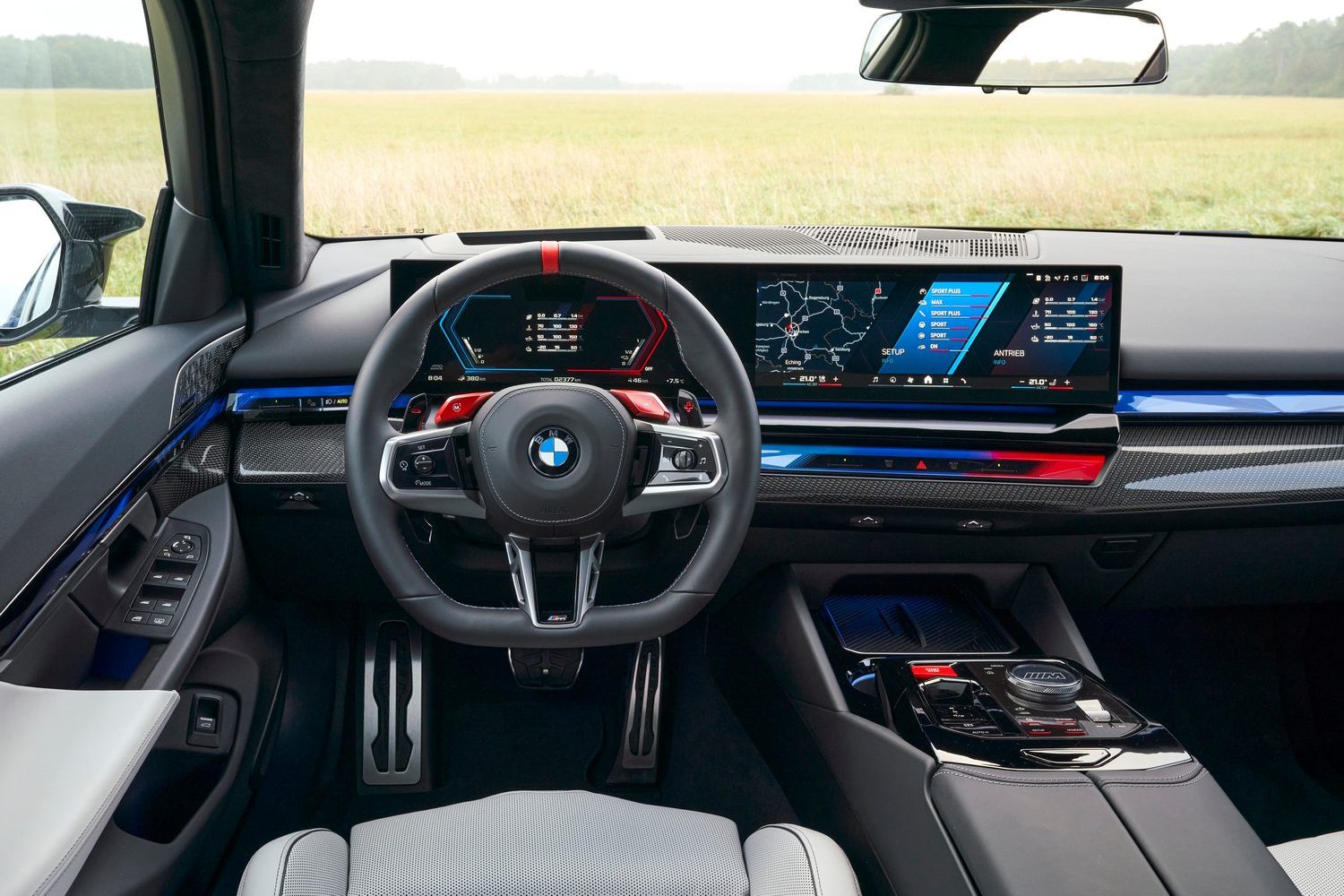
If there’s a technical deficit in the M5, it’s the battery, which can only charge at up to 7kW on AC power, and with no DC fast-charging option. It only takes three hours to fully charge from a home wall box, but it’s a shame that there’s no way to quick-charge it when on a longer journey.
Driving the BMW M5
Let’s talk about weight first, as BMW seems to have made something of a rod for its own back by making the M5 so darned heavy. The simple fact is that 99 per cent of the time, you’re just unaware of it. It’s only really noticeable when braking hard for a tight corner, and even then, the overriding impression is just how well BMW has done in making the M5 still feel agile and composed to drive with all that mass.
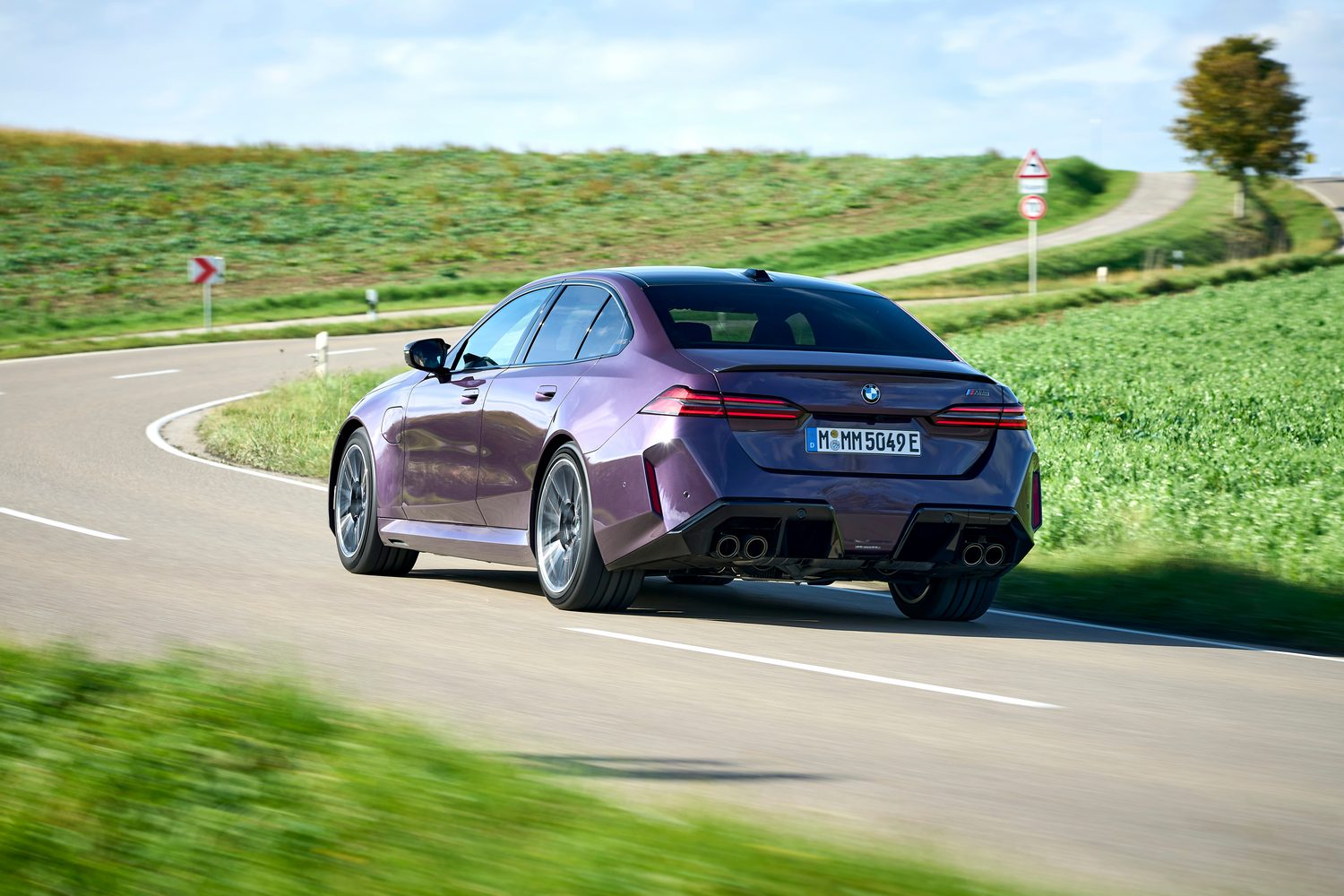
OK, so it’s not quite as pointy nor as agile as the stunning F90 M5 CS - one of our favourite cars of all time - but then it hits back with massive power and torque outputs. True, the CS was faster to get to 100km/h, but the new M5 is much faster in the 80-120km/h time; just 2.2 seconds if you’re in fourth gear.
All that power propelling all that weight could have made the new M5 feel like an overpowered sledgehammer, but it’s not. In fact, it’s astonishing how quickly your mind adapts to the performance on offer, and how sensible and reasonable it seems after a while. Perhaps the weight is acting as something of a dampener in this respect, but there’s no question that - on an appropriate section of Autobahn - the M5 leaps and lunges forwards with senior speed. We easily hit 270km/h without trying, and the car was still pulling strong at that.
Thankfully, given the ability to hit those sorts of speeds, the M5 feels resolutely rock-solid. It never deviates a millimetre from your chosen line unless you ask it to, and the ride quality is spectacularly good - even in Sport Plus mode, which does make things a bit firmer, it’s still shaking off the worst road surfaces that we could find. Getting close to 300km/h does mean that you’ll hear a good bit of wind noise, but that’s unlikely to be an issue for many...
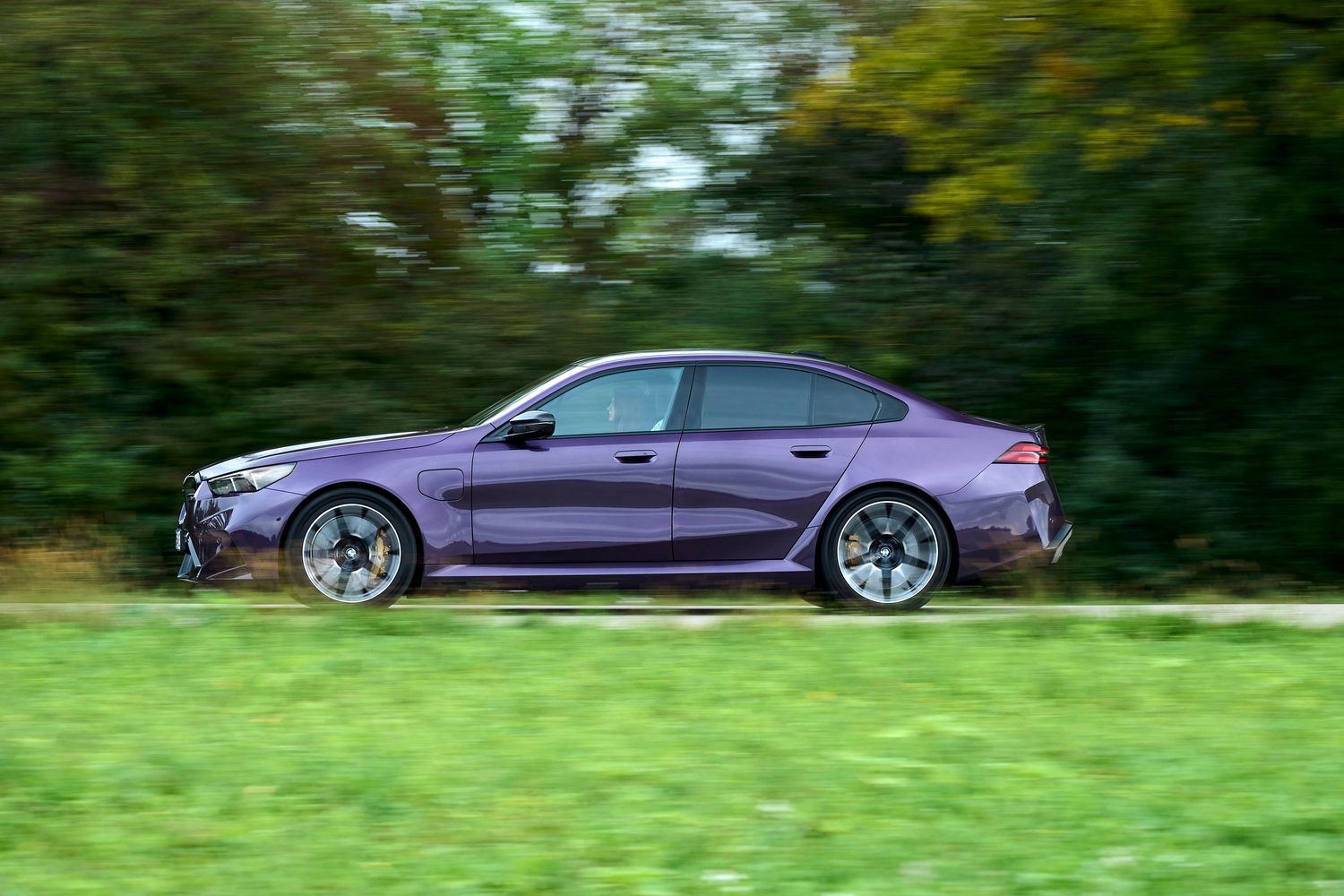
When you get to some corners, yes you have to make a small allowance for the M5’s weight - be precise with your braking, and don’t ask it to turn on a sixpence. But with that allowance made, it’s a staggeringly good way to cross country. Sticking within the reasonable limits of the law means that you’ll almost never run up against any weight restrictions when it comes to handling, and BMW has worked genuine wonders when it comes to keeping the M5 feeling agile and biddable. The steering has a delectable sharpness and plenty of feedback, so you grow quickly confident in placing even this large four-door on narrow, twisty roads.
Find a stretch open enough to give it some throttle input and the M5 responds like the thoroughbred it is. Would an older, lighter M5 CS be more fun in the same circumstances? Yes, almost certainly, but then the CS doesn’t quite have the breadth of performance of the new M5, which is equally at home slinking silently along city streets as it is putting that wonderful Active M Differential slung between the rear wheels to good use on a properly challenging road.
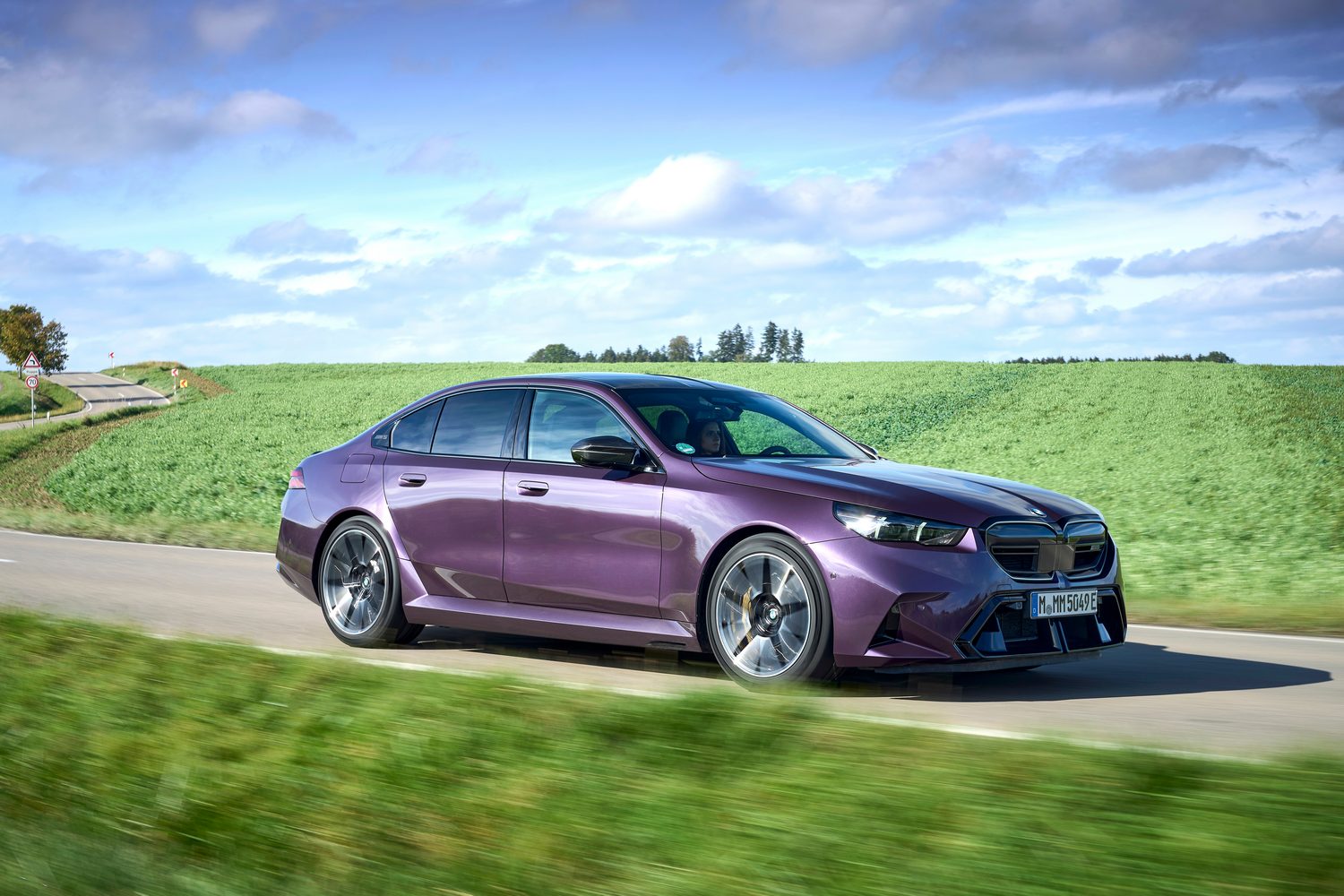
It also helps that this is the first M5 with rear-wheel steering, which can deflect the rears by up to 1.5 degrees - turning one way or the other to keep the big Beemer stable at higher speeds or make it more agile at lower speeds. It works seamlessly, and you’re never aware of it happening. You just notice that this large car is easier to swing through tight turns than you’d expect.
The suspension has just enough give in it to allow a smidge of body roll. BMW says that it explored the idea of an active anti-roll system but decided against it on the grounds of weight and cost. Good idea - that body roll actually does more good than harm, talking to the driver and telling them more precisely where the limit is.
The new M5 is one of those cars you could easily drive non-stop from Munich to Dublin, and then head straight back out again to find a favourite stretch of road on which to enjoy it. The only demerits are an occasional driveline slap effect when lifting to a part throttle after accelerating hard, and a sense that the tyre treads are being shredded when pulling out of tight junctions.
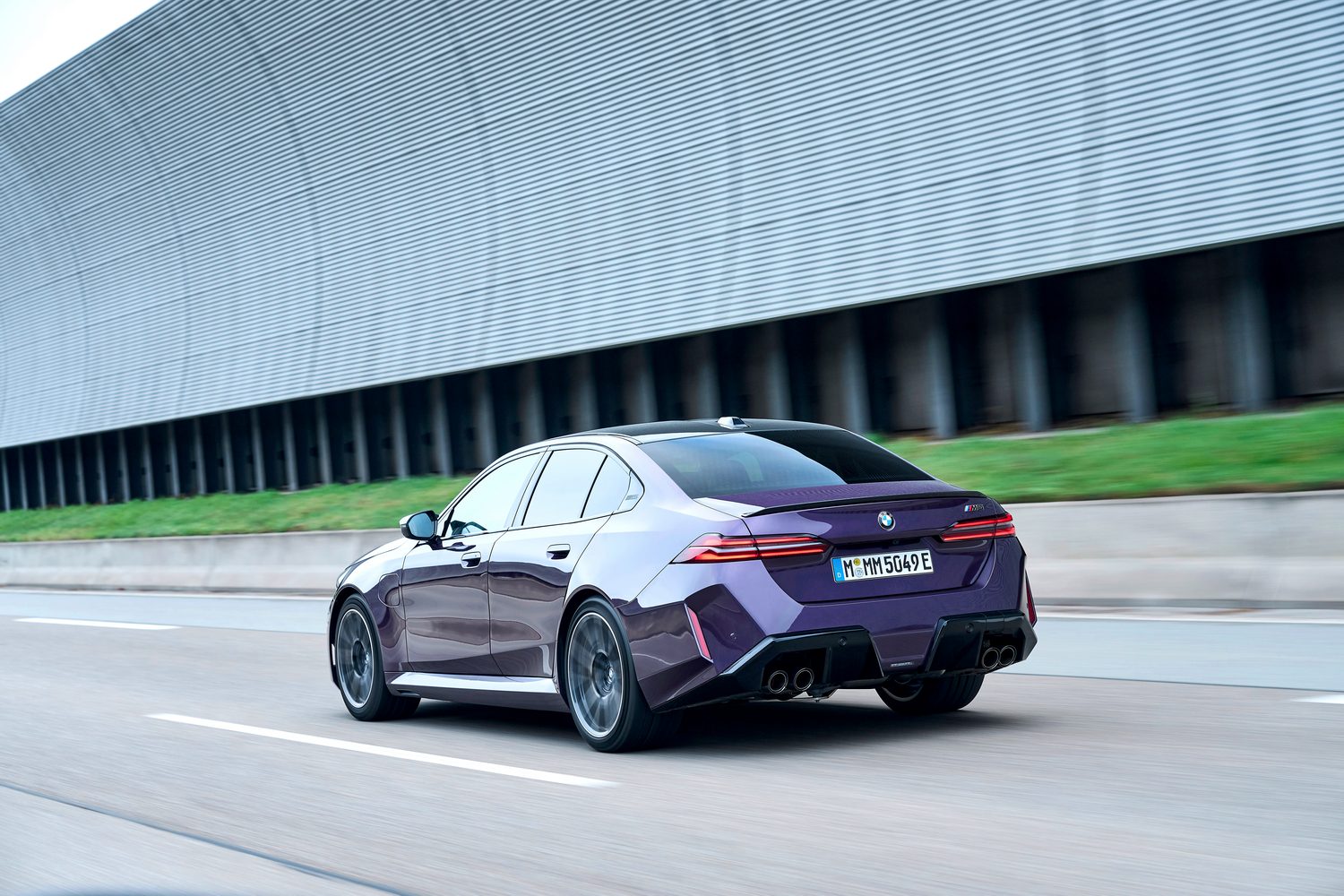
How economical is the BMW M5?
Officially, the M5 is capable of retuning 1.7 litres per 100km fuel consumption. That’s the figure on the official WLTP test in any case, which is rubbish, probably, unless you’re Father Ted-religious about plugging the M5 in and keeping its battery topped up all the time.
BMW does quote a depleted battery consumption figure, and it’s 10.3 litres per 100km, which feels about right. It’ll use a lot more on regular high-speed Autobahn runs of course.
How safe is the BMW M5?
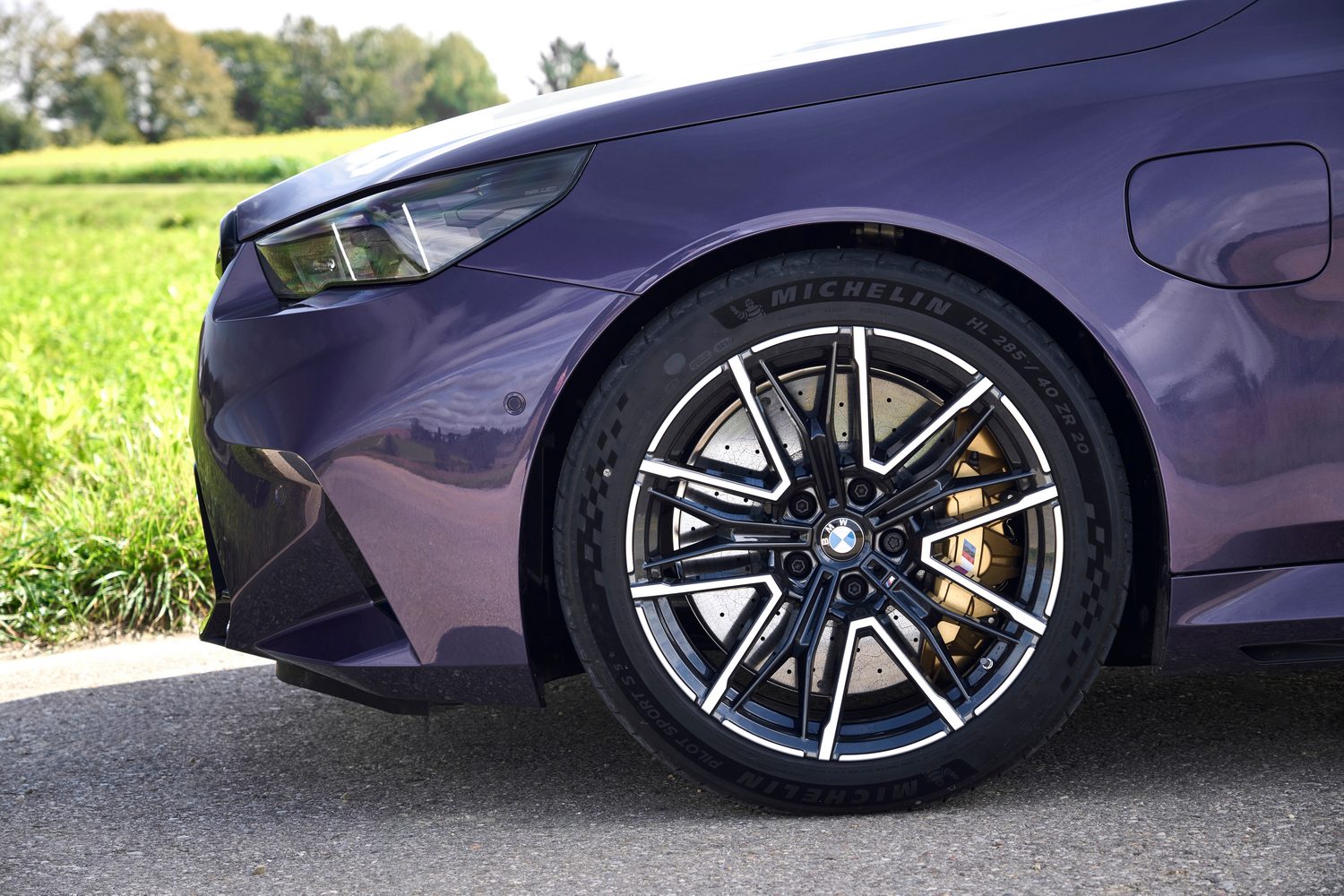
The current 5 Series has been tested by Euro NCAP and returned a full five-star rating, with scores of 89 per cent for adult occupant protection, 85 per cent for child occupants, 86 per cent for vulnerable road users and 78 per cent for active safety systems. To which the M5 adds standard four-wheel drive, high-performance tyres and brakes (with the option of carbon ceramic brakes), and sharper steering and suspension. Of course, you could argue that the M5’s titanic power might get you into more trouble, but then it is at least equipped to get you back out of it again.
The reasons you'd buy a BMW M5
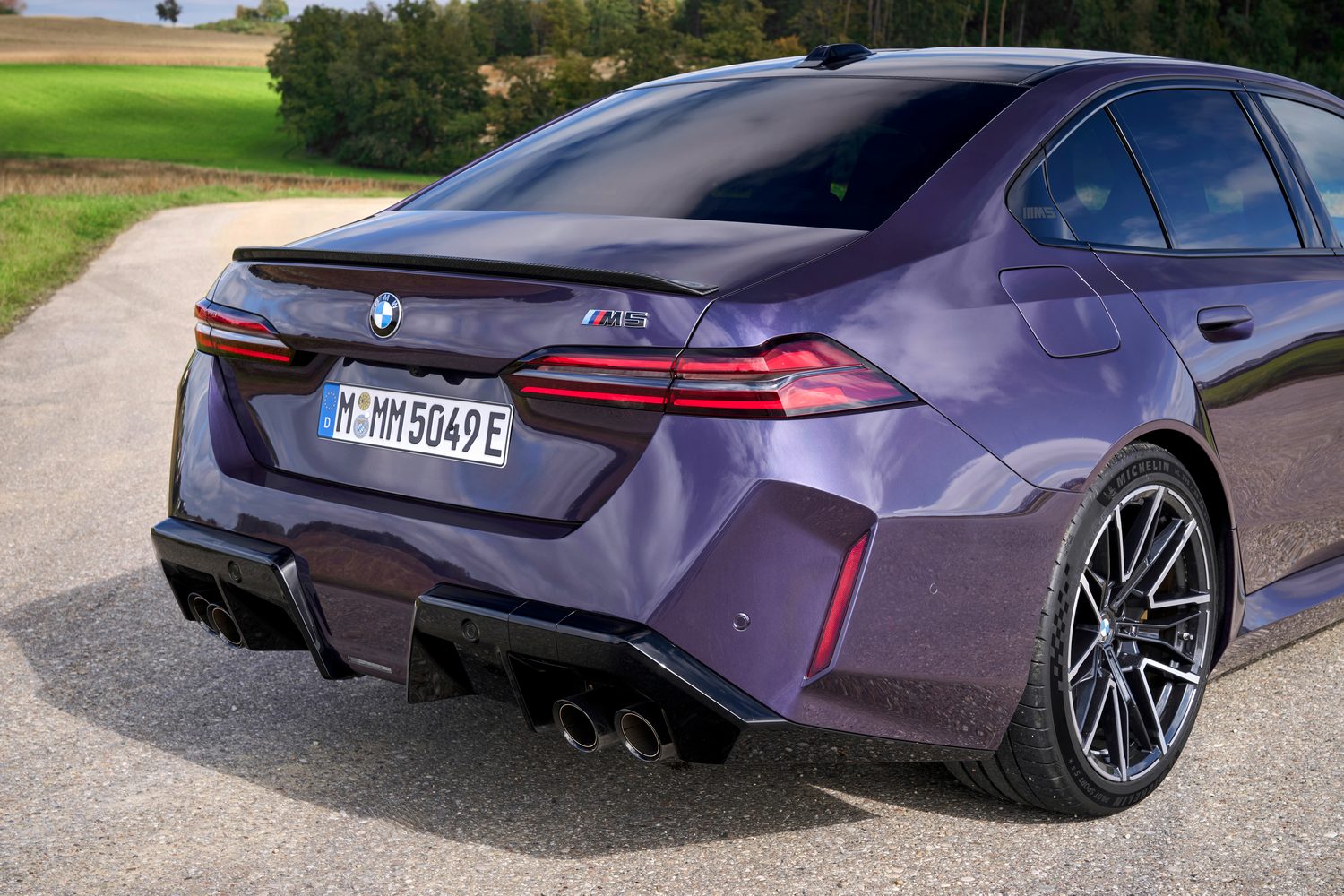
You’d think that the power and weight would dominate the M5 experience, but to BMW’s credit, they don’t. Yes, the new M5 is silly powerful and equally silly in its heft, but it rises above such things to continue being what it’s always been - an unimpeachable way to carry four people at high velocity, while keeping the driver hugely entertained. It’s not quite as pin-sharp as once it was, and arguably skews more to the luxury end of the performance car scale, but neither are deal-breakers. The king rules on.
Ask us anything about the BMW M5
If there’s anything about the BMW M5 we’ve not covered, or you’d like advice in choosing between it and other cars, you can avail of our (completely free) expert advice service via the Ask Us Anything page.

